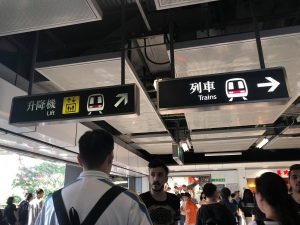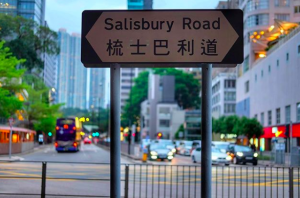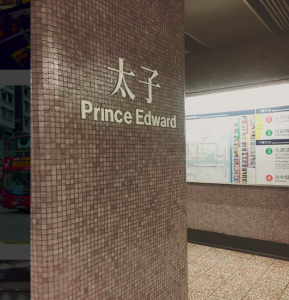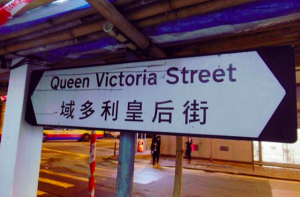Hong Kong’s linguistic landscape, like many other countries’ linguistic landscape, can be greatly understood through understanding its history. Also, it would only be appropriate to mention Hong Kong’s history as locals are getting ready for the upcoming three day weekend to celebrate Hong Kong Independence on Monday! Hong Kong’s linguistic landscape traces back to British Crown rule when they were formerly a colony of Britain. The British influence as a whole is very transparent and salient in Hong Kong, retaining many of the cultural characteristics that reflect its past such as referring to elevators as “lifts” and apartments as “flats”.

Today, English and Cantonese are the two official languages of Hong Kong. You will easily find yourself hearing and seeing both languages as you walk down the street. The government publicly designates English as one of the official languages of Hong Kong, continuing the British influence on its culture and on the very lives of the people. Public enterprises tend to follow in line with the standards set by the government, so they usually do include both English and Chinese, as they are the official languages of Hong Kong.
English remains the professional language used by businesses, government, and other legal sectors, but Cantonese is still the default language of the locals. While in our workplaces, it is quite often to hear conversations in English and host workshops and meetings in English, but outside of work, people tend to resume their lives in Cantonese. However, English is still widely seen in public areas, from the metro station to the streets, and even on menus and shopping malls. Also, in areas that are more populated with tourists, it is quite common to see various languages displayed in menus or signs tailored for tourists and foreigners, which reveals the international attraction and diversity of Hong Kong.



Something that caught my attention was the numerous streets named after symbolic British figures or places, such as Prince Edward Station, Wellington Street, Waterloo Road, Queen Victoria Street, Salisbury Road, and the list continues on. These streets and roads epitomize the representation of landscapes in terms of cultural relevance, highlighting that they are intentionally constructed for the purpose of telling a story about their culture. “The historicized and contextualized approach to the analysis of signs that we advocate enables a holistic understanding of how linguistic landscapes are embedded in larger sociopolitical processes” (341). It is a reminder of Hong Kong’s history for the public, and most importantly, to preserve the British aspect of Hong Kong- a social and political statement that they are proud of their unique culture and background.
Something interesting that I recognized was the popularity with the British Monarch, Queen Victoria. Queen Victoria is one of the most commemorated figures in the world, and it is no less prevailing in Hong Kong. The institutional legacy of Queen Victoria lives on in the very heart of Hong Kong, channeling Victoria Park, Victoria Harbour, Queen’s Pier, Victoria Peak, and many other iconic buildings, landmarks, and roads or streets. Leeman and Modan perfectly sum it up how “‘the language of public road signs, advertising, billboards, street names, place names, commercial shop signs, and public signs on government buildings combines to form the linguistic landscape of a given territory, region, or urban agglomeration” (333). The resonance of British influence in the linguistic landscape of Hong Kong “emphasizes the importance of socio-historical context” which “leads to a greater understanding of the larger sociopolitical meanings of linguistic landscapes” (332).
Works Cited:
Leeman, Jennifer, and Gabriella Modan. “Commodified Language in Chinatown: A Contextualized Approach to Linguistic Landscape.” Journal of Sociolinguistics, vol. 13, no. 3, 2009, pp. 332-362.

Hi Wendy, I do agree with you that Hong Kong is trying to preserve its British history through the usage of historical british names on signage and public spaces. Hong Kong, even though, is part of China but is regulated under a different political policy called “one country, two systems”. Therefore, Hong Kong can express its uniqueness by adopting british heritage, which do leads to “a greater understanding of the larger sociopolitical meanings of linguistic landscapes”.
I really enjoyed understanding more of Hong Kong’s history through your observations. In my time here, I did not take much notice to the names of certain places and roads. And now it’s fascinating for me to realize how much British influence there is in Hong Kong.